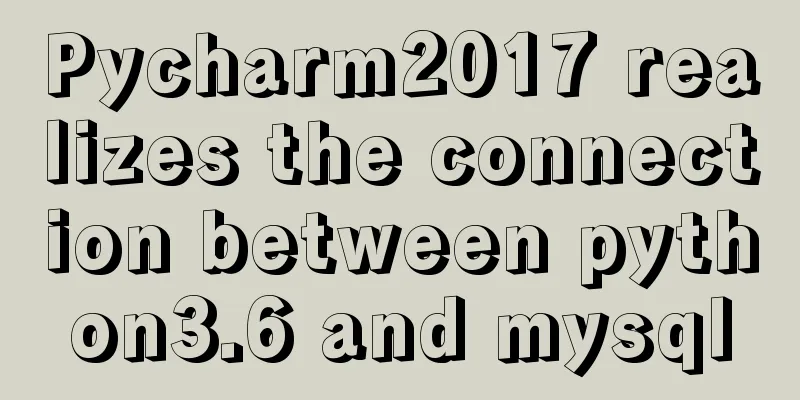MySQL 5.7 JSON type usage details

|
JSON is a lightweight data exchange format that uses a language-independent text format, similar to XML, but simpler than XML, easier to read and write. It is easier for machines to parse and generate, and reduces network bandwidth transmission. The format of JSON is very simple: name/key-value. In previous MySQL versions, to implement such storage, either VARCHAR or TEXT large text was used. After the release of MySQL 5.7, the JSON data type and the retrieval and other function parsing of this type were specially designed. Let's first look at JSON access in older versions of MySQL. Example table structure: CREATE TABLE json_test( id INT, person_desc TEXT )ENGINE INNODB; Let's insert a record:
NSERT INTO json_test VALUES (1,'{
"programmers": [{
"firstName": "Brett",
"lastName": "McLaughlin",
"email": "aaaa"
}, {
"firstName": "Jason",
"lastName": "Hunter",
"email": "bbbb"
}, {
"firstName": "Elliotte",
"lastName": "Harold",
"email": "cccc"
}],
"authors": [{
"firstName": "Isaac",
"lastName": "Asimov",
"genre": "sciencefiction"
}, {
"firstName": "Tad",
"lastName": "Williams",
"genre": "fantasy"
}, {
"firstName": "Frank",
"lastName": "Peretti",
"genre": "christianfiction"
}],
"musicians": [{
"firstName": "Eric",
"lastName": "Clapton",
"instrument": "guitar"
}, {
"firstName": "Sergei",
"lastName": "Rachmaninoff",
"instrument": "piano"
}]
}');Generally speaking, if we encounter such storage in JSON format, we can only take out this record and hand it over to an application, which will parse it. Now in MySQL 5.7, we modify the following table structure: ALTER TABLE json_test MODIFY person_desc json; First, let’s take a look at the keys of the inserted JSON data: mysql> SELECT id,json_keys(person_desc) as "keys" FROM json_test\G *************************** 1. row *************************** id: 1 keys: ["authors", "musicians", "programmers"] row in set (0.00 sec) We can see that there are three keys, namely authors, musicians, and programmers. Now find a KEY and get the corresponding value:
mysql> SELECT json_extract(AUTHORS,'$.lastName[0]') AS 'name', AUTHORS FROM
-> (
-> SELECT id,json_extract(person_desc,'$.authors[0][0]') AS "authors" FROM json_test
-> UNION ALL
-> SELECT id,json_extract(person_desc,'$.authors[1][0]') AS "authors" FROM json_test
-> UNION ALL
-> SELECT id,json_extract(person_desc,'$.authors[2][0]') AS "authors" FROM json_test
-> ) AS T1
-> ORDER BY NAME DESC\G
*************************** 1. row ***************************
name: "Williams"
AUTHORS: {"genre": "fantasy", "lastName": "Williams", "firstName": "Tad"}
*************************** 2. row ***************************
name: "Peretti"
AUTHORS: {"genre": "christianfiction", "lastName": "Peretti", "firstName": "Frank"}
*************************** 3. row ***************************
name: "Asimov"
AUTHORS: {"genre": "sciencefiction", "lastName": "Asimov", "firstName": "Isaac"}
3 rows in set (0.00 sec)Now let's list the detailed values: mysql> SELECT -> json_extract(AUTHORS,'$.firstName[0]') AS "firstname", -> json_extract(AUTHORS,'$.lastName[0]') AS "lastname", -> json_extract(AUTHORS,'$.genre[0]') AS "genre" -> FROM -> ( -> SELECT id,json_extract(person_desc,'$.authors[0]') AS "authors" FROM json _test -> ) AS T\G *************************** 1. row *************************** firstname: "Isaac" lastname: "Asimov" genre: "sciencefiction" row in set (0.00 sec) Let's further demonstrate how to delete all objects corresponding to the KEY authors. mysql> UPDATE json_test -> SET person_desc = json_remove(person_desc,'$.authors')\G Query OK, 1 row affected (0.01 sec) Rows matched: 1 Changed: 1 Warnings: 0 I searched for the corresponding KEY and found that it had been deleted. mysql> SELECT json_contains_path(person_desc,'all','$.authors') as authors_exist s FROM json_test_G *************************** 1. row *************************** authors_exists: 0 row in set (0.00 sec) In summary, although MySQL 5.7 began to support the JSON data type, I suggest that if you want to use it, it is best to take out such values and then calculate them in the application section. After all, the database is used to process simple data. Summarize The above is a detailed explanation of the use of MySQL 5.7 JSON type introduced by the editor. I hope it will be helpful to everyone. If you have any questions, please leave me a message and the editor will reply to you in time. I would also like to thank everyone for their support of the 123WORDPRESS.COM website! You may also be interested in:
|
<<: Steps for Docker to build its own local image repository
>>: Detailed installation tutorial of Docker under CentOS
Recommend
How to install the latest version of docker using deepin apt command
Step 1: Add Ubuntu source Switch to root su root ...
Detailed explanation of the watch listener example in vue3.0
Table of contents Preface The difference between ...
A brief analysis of CSS3 using text-overflow to solve text layout problems
Basic syntax The use of text-overflow requires th...
Vue multi-page configuration details
Table of contents 1. The difference between multi...
Robots.txt detailed introduction
Basic introduction to robots.txt Robots.txt is a p...
Flame animation implemented with CSS3
Achieve results Implementation Code html <div ...
K3s Getting Started Guide - Detailed Tutorial on Running K3s in Docker
What is k3d? k3d is a small program for running a...
Disable autocomplete in html so it doesn't show history
The input box always displays the input history wh...
How to simply encapsulate axios in vue
Inject axios into Vue import axios from 'axio...
jQuery implements breathing carousel
This article shares the specific code of jQuery t...
How to separate static and dynamic state by combining Apache with Tomcat
Experimental environment Apache and Tomcat are bo...
Detailed explanation of reduce fold unfold usage in JS
Table of contents fold (reduce) Using for...of Us...
Vue implements click and passes in event objects and custom parameters at the same time
Just pass in custom parameters HTML <div id=&q...
Summary of 10 common HBase operation and maintenance tools
Abstract: HBase comes with many operation and mai...
Methods and techniques for designing an interesting website (picture)
Have you ever encountered a situation where we hav...









